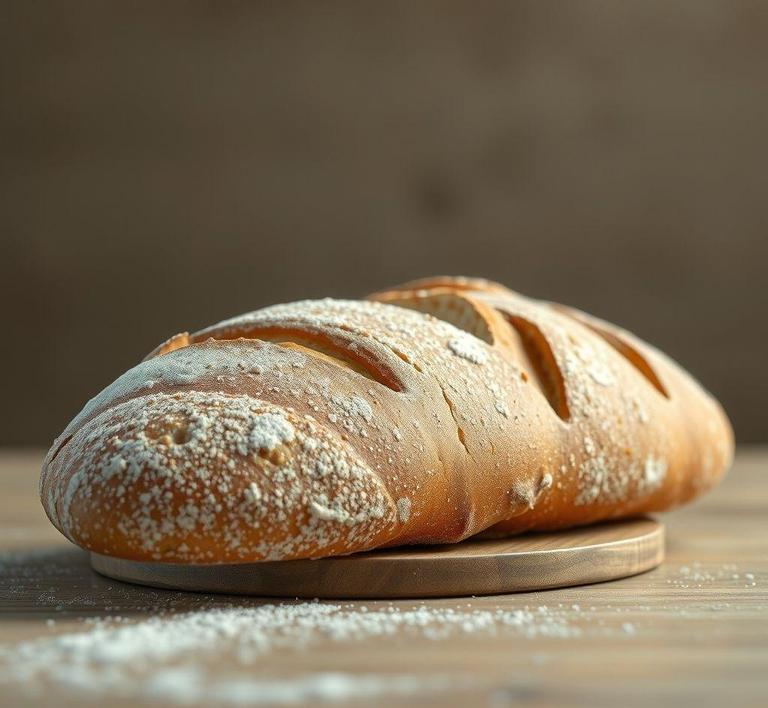Refreezing bread might sound a bit unconventional, but it’s a handy trick for extending the life of your loaves and avoiding waste. Whether you bought too much bread or simply want to keep your favorite loaf fresh for longer, knowing how to properly refreeze bread can be a game-changer. This guide will walk you through the best methods, tips, and tricks to ensure your bread stays delicious even after a second freezing, keeping it soft, fresh, and perfectly edible when you’re ready to enjoy it!
Can You Refreeze Bread?

The idea of refreezing bread is a common curiosity, especially when you have more bread than you can use before it starts to go stale. The short answer is yes, you can refreeze bread, but there are several important factors to consider in order to maintain its texture and flavor. Freezing bread is a highly effective method of preservation, preventing mold growth and extending its shelf life. When bread is frozen, it halts the processes that cause it to spoil-like staling and mold growth-allowing you to enjoy it weeks or even months later.
However, while freezing is great for long-term storage, refreezing can introduce some issues. Freezing bread once is completely fine, but when you start the cycle of freezing, thawing, and refreezing, it can negatively affect the bread in various ways. This is especially true if the bread has been thawed at room temperature or in a microwave before being refrozen. Each freeze-thaw cycle can break down the bread’s delicate structure, making it less appealing in terms of texture and taste. But let’s dive into why this happens and how to minimize the effects.
How To Refreeze Bread?
If you find yourself needing to refreeze bread, following a few key steps can ensure that the bread maintains its quality to the best extent possible.
-
Thaw Properly
Before you even think about refreezing, it’s essential to allow the bread to thaw properly. Ideally, you should let the bread thaw in the refrigerator overnight, as this will prevent the bread from absorbing too much moisture. If you simply leave it out on the counter, it may get soggy, which will make the refreezing process much less successful.
-
Slicing The Bread
One of the best ways to refreeze bread is to slice it before freezing it in the first place. Freezing individual slices makes it easier to grab exactly what you need without having to thaw the entire loaf. When you’re ready to refreeze, you can just put back the slices you haven’t used, leaving the others sealed properly.
-
Wrap It Well
The next critical step is ensuring the bread is tightly wrapped to avoid freezer burn and exposure to air, which can degrade the bread’s texture and taste. Use plastic wrap, aluminum foil, or a resealable freezer bag to seal the bread in an airtight manner. The better the bread is sealed, the less likely it is to lose moisture or absorb the odors of other frozen foods.
-
Quick Freeze
The quicker you freeze bread after it’s been thawed, the better the result. Slow freezing can cause the bread to form larger ice crystals, which may break down the bread’s cellular structure. Ideally, use a quick-freeze setting in your freezer, or place the bread on a baking sheet for an hour before storing it in the freezer bag. This ensures that the freezing process happens as quickly as possible.
-
Thawing After Refreezing
Once you’ve refrozen the bread, you should again take care in how you thaw it. The best method is to allow it to thaw in the refrigerator overnight before using it. If you’re in a hurry, you can use a microwave, but be aware that this may change the bread’s texture-especially if it’s been through several freeze-thaw cycles already.
Quality Impact
While it’s possible to refreeze bread, it does come with some quality trade-offs. The biggest concern is the texture. Bread has a high moisture content, and when it’s frozen, the water inside it turns into ice crystals. These ice crystals can puncture the cell walls of the bread, and when it thaws, the moisture may escape, leaving the bread with a dry, crumbly texture. The more you freeze and refreeze the bread, the more these issues are likely to become apparent.
- Texture Deterioration: Each freeze-thaw cycle compromises the bread’s structure. The bread becomes more prone to crumbling and may lose its original softness and fluffiness. If you’re refreezing bread that was previously soft and freshly baked, you may end up with a stale, dry version after the second freeze.
- Flavor Loss: Freezing doesn’t affect the flavor of the bread as much as it does its texture, but repeated freezing can cause subtle flavor degradation. If the bread is exposed to air during the freezing or refreezing process, it may develop off flavors. The bread may also pick up the tastes of other foods in the freezer if it’s not wrapped tightly.
- Freezer Burn: If the bread isn’t wrapped well enough, freezer burn is a real risk. Freezer burn occurs when moisture evaporates from the bread and the exposed areas become dehydrated. This leads to a dry, tough, and sometimes unpleasant texture. Refreezing doesn’t make it worse than it already is, but it won’t improve it either.
While you can refreeze bread, it’s not always ideal. The process of freezing and thawing alters the texture and may cause some flavor loss, especially if the bread has gone through multiple cycles. However, if done carefully, you can still preserve the bread’s quality and enjoy it later, particularly if you slice it beforehand, wrap it tightly, and freeze it quickly.
If you find yourself frequently needing to freeze and refreeze bread, it may be worth reconsidering how much bread you purchase or bake at a time. Freezing bread in smaller portions or using alternative preservation methods, like storing it in an airtight container for a few days, can help you avoid the need for multiple freezing cycles. Ultimately, while freezing is a great way to extend the life of your bread, it’s best to limit how often you refreeze to ensure the best taste and texture possible.
Is It Safe To Refreeze Bread?
Refreezing bread is a topic that often sparks curiosity, especially among those looking to prolong the shelf life of this beloved staple. While it is technically safe to refreeze bread, doing so isn’t always the best option in terms of quality. Let’s break it down in more detail:
When bread is initially frozen, the process helps to preserve its freshness by halting the growth of bacteria and mold. Freezing locks in the moisture of the bread and prevents staling. However, when you thaw bread and then refreeze it, the structure of the bread begins to break down. The gluten, the protein that gives bread its structure, starts to lose its elasticity after being frozen and thawed multiple times. This results in a loaf that could be drier, crumblier, and possibly more bland than the original texture.
Additionally, refreezing bread can sometimes lead to uneven distribution of moisture. When the bread thaws, the moisture in the bread might leak out, and when it’s refrozen, the moisture forms ice crystals, which can alter the texture further once thawed again. While this process won’t necessarily make the bread unsafe to eat, it could drastically reduce its taste and overall texture.
The safety of refreezing bread primarily depends on how it was handled before being frozen the first time. If the bread was kept at a consistent, appropriate temperature (below 0°F or -18°C) and thawed properly, it should be safe to refreeze. However, if it has been left out at room temperature for too long, or if it was thawed in an unsafe manner (like leaving it out for extended periods), refreezing it could lead to food safety concerns. In short, while refreezing is not inherently dangerous, it does come with the potential for a loss in quality.
Signs That Bread Should Not Be Refrozen
Although refreezing bread is possible, there are specific signs to look for that indicate bread should not be refrozen, as it may already be past its prime or unsafe. These signs include:
- Mold Growth: This is the most obvious sign that bread should not be refrozen. Mold can develop on bread when it’s exposed to moisture and warmth. If you notice any mold spots, whether it’s visible or hidden in the interior, discard the bread. Refreezing bread that has mold can further spread the spores and lead to foodborne illness.
- Stale or Dry Texture: If the bread feels extremely dry or stale before freezing it for the first time, refreezing will only make it worse. When bread is already losing moisture, refreezing will exacerbate the issue, and the bread will likely become inedible after thawing.
- Off Smell: A sour or unpleasant odor can indicate that the bread has already started to spoil. Even if there are no visible signs of mold, the bread may have begun to ferment or degrade, and refreezing it would not reverse this process.
- Excessive Freezer Burn: If the bread has been in the freezer for an extended period and has developed freezer burn (indicated by dry, hard spots on the surface of the bread), refreezing it won’t improve the situation. The texture will continue to degrade, and the bread may become too tough to enjoy.
- Improper Thawing: If the bread was thawed improperly, such as being left out at room temperature for too long or reheated in an inconsistent way, the bread’s safety and texture could be compromised. In such cases, refreezing can make the bread even less palatable.
Common Refreezing Mistakes
When it comes to refreezing bread, there are several common mistakes people make that can lead to subpar results or food safety issues. Here are some of the most prevalent ones:
- Thawing Bread at Room Temperature for Too Long: The most critical mistake is improperly thawing the bread. Leaving it out for several hours can cause the bread to enter the ‘danger zone’ for bacterial growth (between 40°F and 140°F). This increases the risk of foodborne illness and makes it unsafe to refreeze.
- Refreezing Multiple Times: Bread that has been thawed and refrozen multiple times will suffer the most damage. Each freeze-thaw cycle degrades the bread’s texture, making it soggy, tough, or crumbly. Additionally, repeated freezing and thawing increases the risk of bacterial contamination.
- Using Poor Freezer Storage: Not wrapping bread properly before freezing it is a mistake that many people make. If bread is stored without proper wrapping or packaging, it is more prone to freezer burn, which ruins its texture and taste. Even if the bread is refrozen, the damage done by freezer burn cannot be undone.
- Freezing Bread After It’s Already Starting to Spoil: Some people may think they can save slightly stale or moldy bread by freezing it. Unfortunately, freezing doesn’t stop mold growth-it just slows it down. If the bread shows any signs of spoilage, such as an off smell or visible mold, it’s better to throw it away rather than attempt to freeze it again.
- Not Thawing Bread Correctly: If you plan to eat the bread after thawing, improper thawing methods can ruin the texture. It’s best to thaw bread in a controlled, cool environment (like in the fridge or at room temperature, depending on how quickly you want it to thaw). Thawing in the microwave or on a hot surface can cause uneven moisture distribution, leading to a soggy or chewy loaf.
Tips And Tricks
If you want to make the most of freezing and refreezing bread, here are some tips and tricks to ensure that you don’t lose flavor or texture:
- Freeze Bread While Fresh: The best time to freeze bread is when it’s fresh. Freezing bread as soon as possible after purchasing or baking helps preserve its flavor and texture. Try to freeze slices instead of whole loaves, as this will make it easier to thaw and use only what you need.
- Wrap Properly: Always wrap the bread tightly in plastic wrap, aluminum foil, or a freezer-safe bag before freezing. For added protection, place the wrapped bread inside an airtight container. This will help prevent freezer burn and preserve the bread’s moisture.
- Thaw Slowly: Thaw bread at room temperature in its packaging to help retain moisture. If you’re in a rush, you can also toast slices directly from the freezer or warm them in the oven.
- Avoid Refreezing Bread Multiple Times: If you know you won’t use the entire loaf, it’s better to freeze bread in slices rather than as a whole loaf. This way, you can take out just what you need and avoid the temptation to refreeze the entire loaf.
- Reheat to Revive Freshness: If the bread is slightly stale after thawing or refreezing, you can bring it back to life by toasting it, heating it in the oven, or even sprinkling a little water over it before baking. This can help restore some of the moisture that might have been lost during freezing.
- Consider Making Bread Crumbs or Croutons: If the bread has gone stale after freezing and refreezing, don’t throw it away! You can repurpose it by making breadcrumbs or croutons. These can be stored for long periods and are great additions to soups, salads, or casseroles.
Conclusion
In conclusion, while it is safe to refreeze bread, it’s a practice that should be approached with caution. Refreezing can affect the bread’s texture, flavor, and overall quality, particularly when it’s done multiple times or the bread has already started to show signs of spoilage. To ensure that you get the best results, freeze bread while it’s still fresh, wrap it properly, and avoid refreezing too often. By following these tips, you can extend the life of your bread without sacrificing too much in terms of flavor and texture. If you notice any signs of mold or an off smell, it’s always safer to discard the bread rather than take the risk of consuming it after refreezing. When done right, freezing and refreezing bread can be an excellent way to save it for later-just remember that quality may be compromised in the process.


